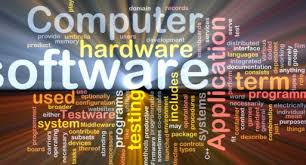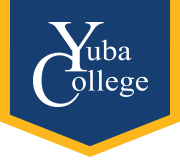
Computer science is the blending of principles, theories and applications of the technologies that underlie the access to information. This science involves studying the structure, mechanization and expression of algorithms, which are methodical processes for solving problems.
Faculty
Doug Joksch
Professor of Computer Science
530-741-6739 phone
530-749-3854 fax (shared)
djoksch@yccd.edu
Courses
COMSC 2-Computer Assembly Language (4 units) CSU/UC
Basic operating principles and structure of digital computers, including addressing modes, stack manipulation, interrupt processing, fixed and floating point formats, subroutines, features of assemblers, directives, symbol tables, and macros; programs are written using typical operating systems and machine language for typical modern processors. Not open to students with credit in ELECT 25. (L,M)
COMSC 6-Basic Programming (3 units) CSU/UC
Corequisite: COMSC 13
Introduction to programming on microcomputers using the language QBASIC, including problem-solving techniques, developing algorithms, coding solutions, and debugging programs. (L,M)
COMSC 7-Introduction to Visual Basic Programming (3 units) CSU/UC
Corequisite: COMSC 13
Introduction to event-driven programming in the Windows environment using Microsoft Visual BASIC.Net. Intended for those with prior experience or course work in at least one formal programming language. Includes objects, properties, user interface, forms, event procedures, custom controls, graphics, data access, report creation, and debugging methods. (L,M)
COMSC 9A-C++ Programming (3 units) CSU/UC
Corequisite: COMSC 13. COMSC 6 is strongly recommended.
Introduction to the C++ programming language. Emphasis on structured programming methods, object-oriented design, and structured data types. The programming cycle from problemsolving to debugging is emphasized. (L,M)
COMSC 9B-Data Structures (3 units) CSU/UC
Prerequisite: COMSC 9A with a “C” or better grade. Corequisite: COMSC 13
A continuation of Computer Science 9A using Object Oriented Programming techniques. An introduction to abstract data types, algorithm analysis, data structures including lists, hash
tables, trees, and graphs. Required for Computer Science majors. (L,M)
COMSC 10L-Computer Literacy (3 units) CSU/UC
Corequisite: Concurrent enrollment in COMSC 13
Introduction to the computer and its applications. A survey of the history of computers, hardware, software, social aspects, and problem-solving techniques; hands-on microcomputer object oriented programming will be examined. (L,M)
COMSC 11-Advanced C++ Programming (3 units) CSU/UC
Prerequisite: COMSC 9A or equivalent Corequisite: COMSC 13
Topics in object-oriented programming using the C++ programming language, including C++ programming techniques, streaming input/output, dynamic memory allocation, classes and data abstraction, operator overloading, inheritance, and polymorphism. (L,M)
COMSC 12-Java Programming (3 units) CSU/UC
Corequisite: Concurrent enrollment in COMSC 13
Introduction to Java Programming. Intended for those with prior experience or course work in at least one formal programming language, preferably C or C++. Topics include: Java and HTML, Applet user interfaces, graphics and multimedia, objects, classes and methods, input and output and output
streaming, networking, threads, packages, the Java AWT and API. (L,M)
COMSC 13-Computer Lab (0 units) CSU
Corequisite: Concurrent enrollment in COMSC 6, 7, 9A, 9B, 10L, 11, 12, and 20
Laboratory required for students enrolled in computer language courses COMSC 6, 7, 9A, 9B, 10L, 11, 12, and 20.
COMSC 20-Web Publishing with HTML (3 units) CSU
Corequisite: Concurrent enrollment in COMSC 13
Fundamentals of Web publishing using HTML. Covering design, writing, and maintenance of web pages. Emphasis on real-life informational and interactive presentation to include testing, revising, and maintenance of web presentations on the World Wide Web. (L)
COMSC 43A-Unix System Management (3 units) CSU
Responsibilities and operations of a Unix System Manager, including installation of a Unix type operating system, management of the file structure, user creation, security systems, system commands, implementation of various environment shells, script construction and network
management. Lab exercises under the Linux Operating System to demonstrate proper system management techniques. (L,M)
COMSC 44A-A+ Test Certification (4 units) CSU
Fundamentals of personal computer (PC) hardware including ports, boards, buses, memory, disk drives, controllers, monitors, and printers, as well as PC configuration, preventive maintenance, and diagnostics. Course stresses the skills required to pass the CompTIA A+ Certification Test. Computer-aided instruction and lab exercises included. (L,M)
COMSC 44C-Security+ (3 units) CSU
The course provides an overview of network security basics including general security concepts, communication security, infrastructure security, operational and organizational security and cryptography basics. (L,M)
COMSC 44N-Network Plus N+ Test Certification (4 units) CSU
Fundamentals of networking hardware and software including network topology, OSI (open system interconnect) communications model, networking practices, installation, maintaining and troubleshooting network hardware and software. Course stresses skills required to pass the CompTIA
N+ Certification Test. Lecture, computer-aided instruction and lab exercises are included. (L,M)
Associate Degree in Computer Science
Required Courses
COMSC 9A C++ Programming
COMSC 9B Data Structures
Plus 12 units from the following:
COMSC 6 BASIC Programming
COMSC 7 Intro. to Visual Basic Programming
COMSC 11 Advanced C++ Programming
COMSC 12 JAVA Programming
COMSC 43A Unix System Management
Additional Recommended Courses:
MATH 1A Calculus
MATH 1B Calculus
MATH 25 Finite Math
STAT 1 Introduction to Statistical Methods
Gainful Employment
Find information about how much a certificate will cost to earn, how long it may take you, how long on average it has taken successful certificate completers, and on average how much debt they accumulated in order to complete their certificate
Links
College Success Center (small group tutoring)
MESA Program
